Africa —
About 40,000 elephants and 1,000 rhinos are killed for their tusks and horns every year. Now scientists are using DNA tests to help find the criminals and send them to jail.
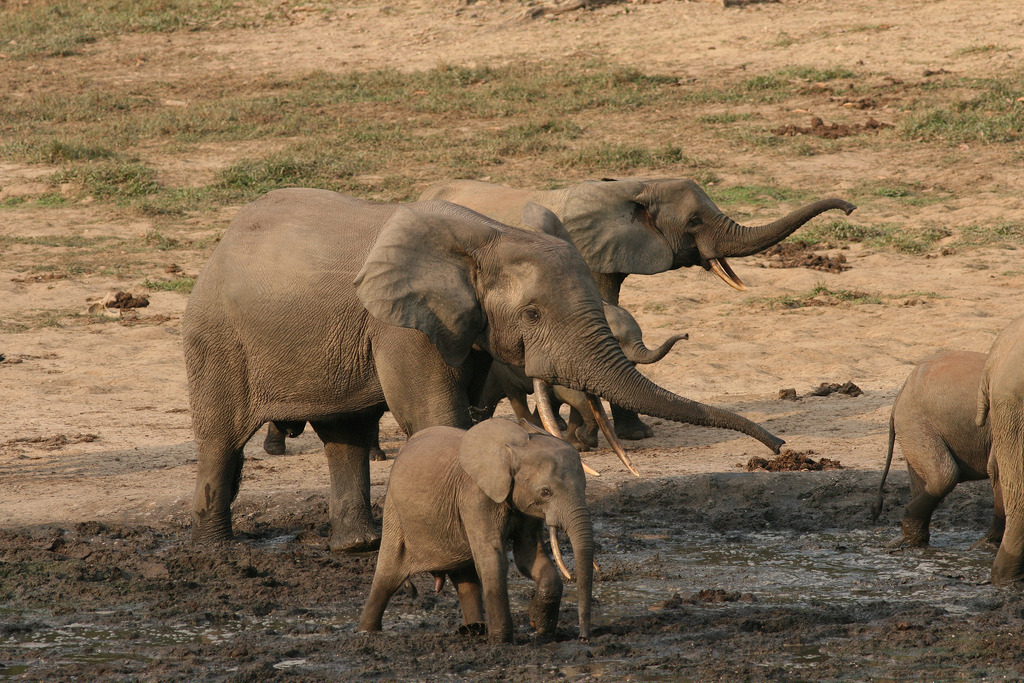
Around 1,000 rhinos are killed each year.
Now scientists are using DNA to try and catch the criminals.
(Source: U.S. Fish and Wildlife Service, via Flickr.com.)
African elephants and rhinos have long been hunted by poachers. Poachers kill animals for money even though it is against the law. For a long time, elephants were the main target. In the last ten years, more and more rhinos are being killed, too.
Poachers kill elephants for their tusks and rhinos for their horns. Then other people, called “traffickers”, buy the tusks and horns and sneak them out of the country on a ship. The traffickers sell the tusks and horns again for even more money, usually in Asia.
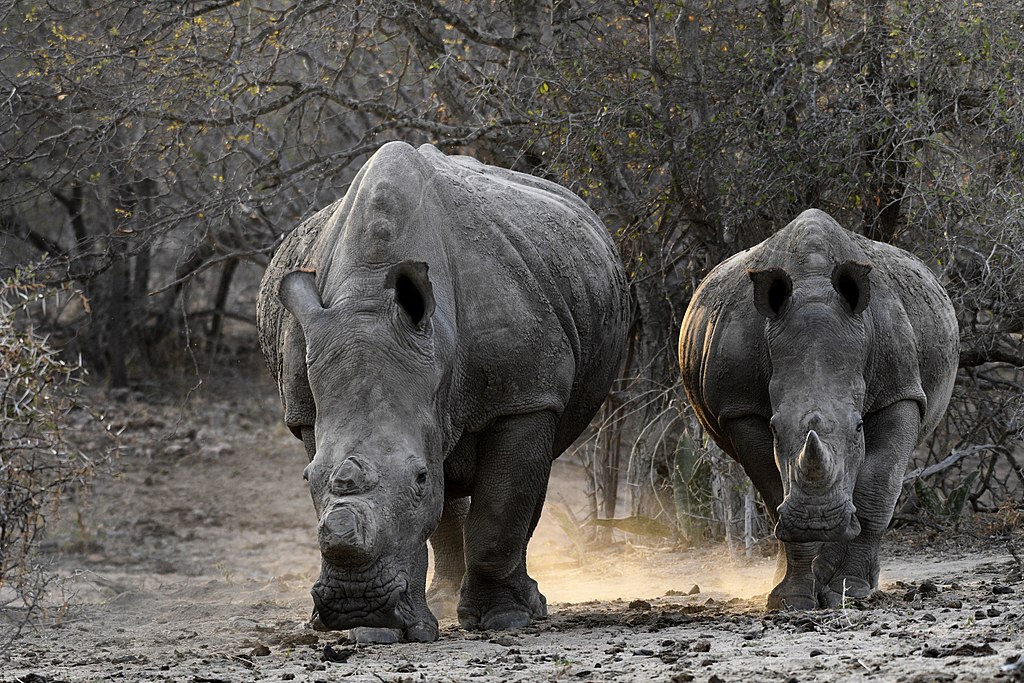
Rhino horns can sell for more than $27,000 a pound ($60,000 a kilogram).
The rhino on the left has had its horn cut off to protect it from poachers.
(Source: Wolves201, from Wikimedia Commons.)
Elephant tusks can sell for about $450 a pound ($1000 a kilogram). Rhino horns can sell for more than $27,000 a pound ($60,000 a kilogram).
In some parts of Asia – especially China and Vietnam – many people think the tusks and horns have special powers. They pay a lot of money for them. Sometimes the tusks and horns are made into cups or art or jewelry. Sometimes they are ground into powder, which people eat because they think it is like medicine.
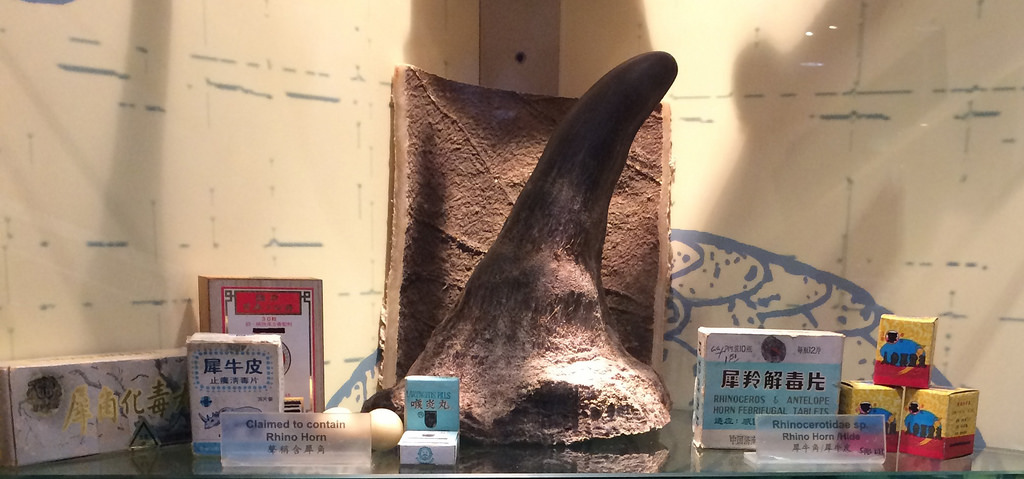
Sometimes they are made into cups or art or jewelry.
Sometimes they are ground into powder, which is eaten like medicine.
This picture shows a rhino horn and some products made from rhino horn.
(Source: .U.S. Government Accountability Office, via Flickr.com.)
It has been hard to catch the criminals. Usually by the time the dead animals were found, the poachers were far away. And when traffickers were caught with tusks or horns, it was impossible to say where the horns came from. Until recently.
Now scientists are using DNA tests to connect traffickers with elephants and rhinos that have been killed. You might have heard of police using DNA to tell if a person is involved in a crime. Every living thing has its own DNA, which is different from the DNA of every other living thing. DNA can be found in any part of the animal – blood, skin, hair, horns, or tusks. Even in poop.
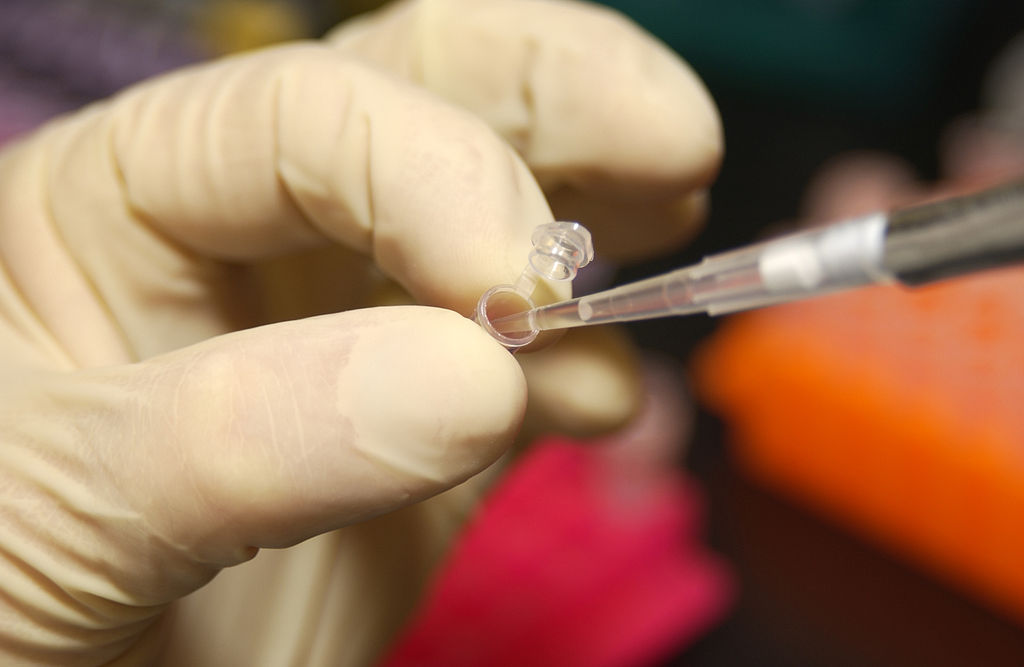
This information allows them to connect traffickers with animals that have been killed.
(Source: Maggie Bartlett, NHGRI, via Wikimedia Commons.)
Two different groups of scientists have used computers to build complete lists of the DNA of almost all of the elephants and rhinos in Africa. The rhino DNA came mainly from hair, skin, and blood samples. The elephant DNA was collected from animal poop.
That may not sound very pleasant, but it has allowed the scientists to build powerful tools for protecting the animals.
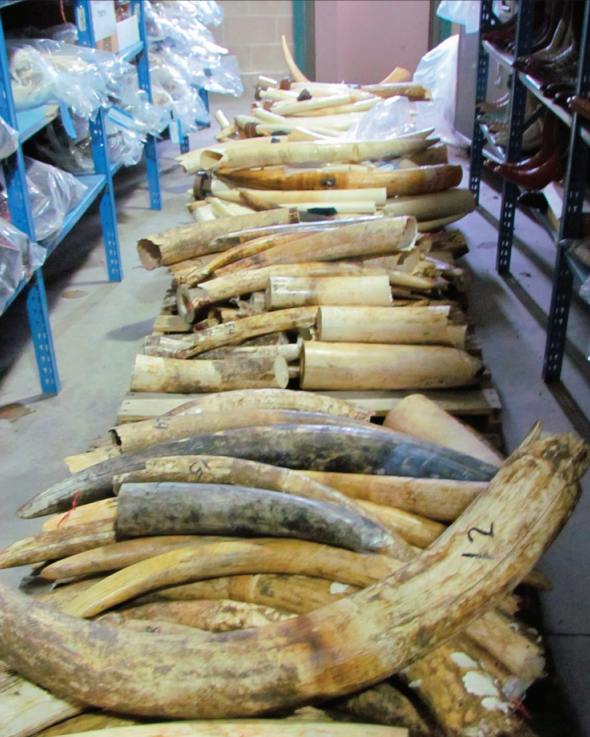
This helps police find patterns in the ways the poachers and traffickers work.
The DNA records have helped send poachers and traffickers to jail.
(Source: U.S. Fish & Wildlife Service, via Wikimedia Commons.)
Now when tusks or horns are found on a ship in another country, DNA tests can show where they came from. This information can lead to quick action in the country where the animals were killed. It can also help police discover patterns in the ways the poachers and traffickers work. With the new DNA information, it is easier to prove that someone has been involved in killing animals for their tusks or horns.
So far, these DNA records have been used to send poachers and traffickers to jail in many countries in Africa. People hope that by punishing poachers and traffickers, they can save the lives of more African elephants and rhinos.
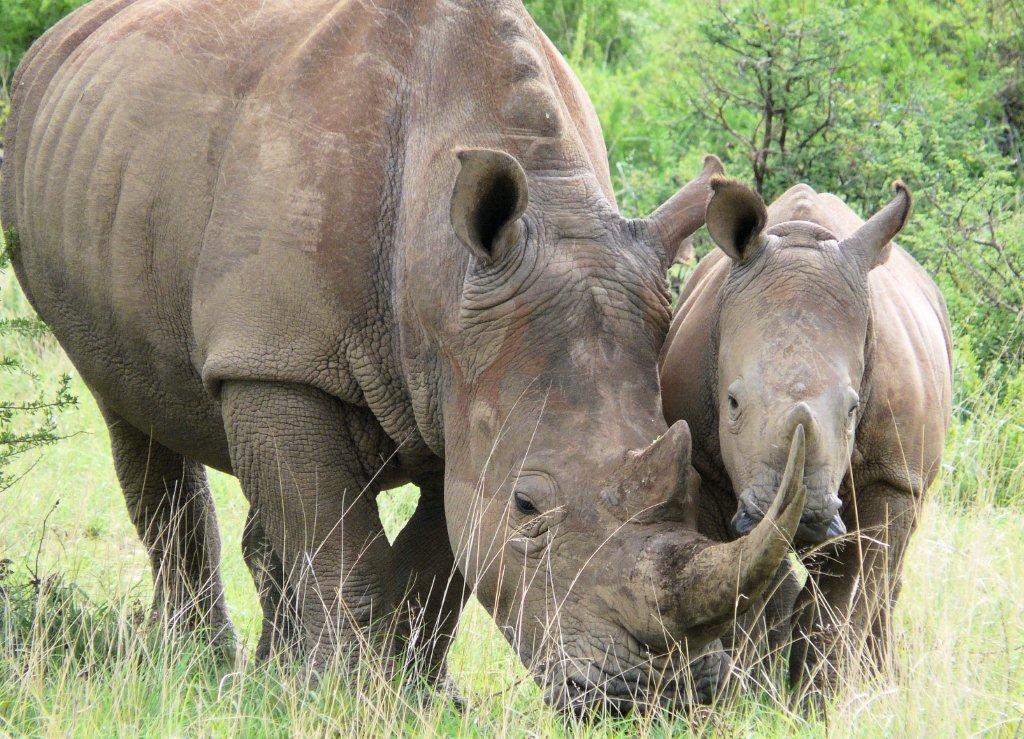
It’s important to act quickly.
There are only about 400,000 African elephants and 20,000 White rhinos left.
(Source: GocheGanas, from Wikimedia Commons.)
That’s important, since there are only about 400,000 African elephants and 20,000 White rhinos left.
